I call my trip a “pilgrimage”, not only because it is really “long” and arduous, but also because it is my way of showing my respect to Larung Gar - a true Buddhist holy site.
___________________________
I am not a religious person or interested in any particular religion. I am simply a culture lover, a traveler, and always believe in good things. So, Larung Gar is the destination for me. This is the largest Buddhist Academy in the world, a place not only for monks, not only a desirable stop for Buddhists, it is a place that makes my soul "calm" after the uncertainties, as the famous Greek playwright - Menander - said: "Culture makes all men gentle".
And then, I left Hanoi to go to Larung Gar - a Buddhist holy land.

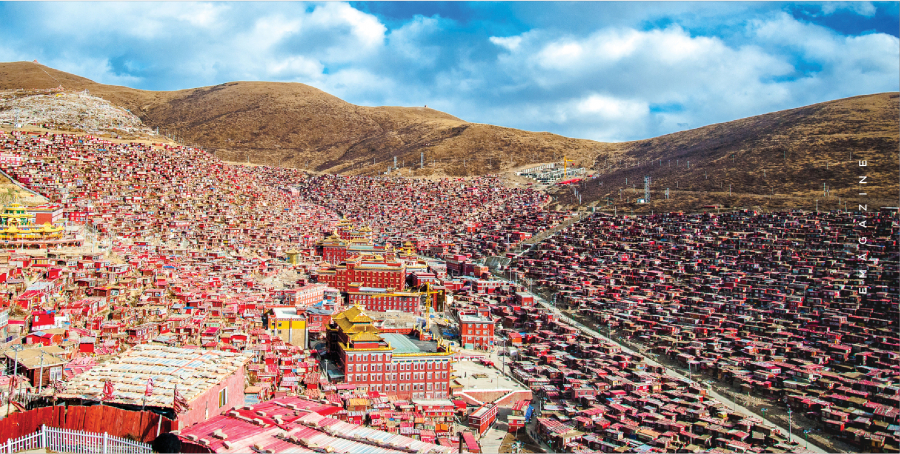
Not to mention the fact that foreign visitors are restricted, the journey to Larung Gar is also a real challenge. I flew to Chengdu, then had to travel by bus through Kangding, Garze to reach Larung Gar. The transit distance is up to 865 km, which is the same as the distance by car from Hanoi to Quang Ngai. The road is remote with all kinds of terrain, from snow-capped mountains all year round to yellow rapeseed fields under the sun, going uphill and downhill. We had to be silent the whole way to "hide" that we were foreign tourists because if the police discovered us, we would most likely be forced to return to Chengdu.
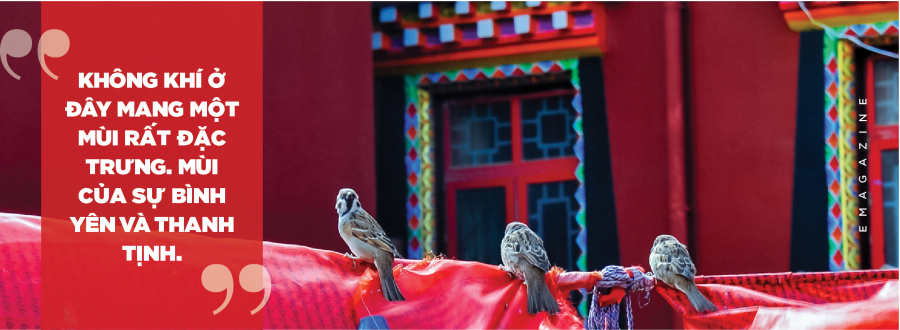
We only had one day to stay in Larung Gar, so we took advantage of the opportunity to stay at Sac Dat for one night before leaving. The next morning, we woke up early, got ready, and waited for the local driver to pick us up. Once we were safe, the hotel owner and the driver signaled us to get in the car quickly. Due to the many civil defense checkpoints along the way, the Tibetan driver had to quickly take us to a road right at the foot of the mountain. Our task was to trek the 3 km ahead, while he would wait at the other end of the bridge. In the early morning cold, we quietly walked halfway up the mountain, passing large rocks. Along the road, there were many rocks engraved with the words Om mani Padmi hum and arranged around the stream. During the whole mountain journey, we met many local people. It seemed that they were no longer unfamiliar with the image of strange pedestrians, so they always smiled at us instead of greeting us. The walk was arduous, but thinking that each step would bring us closer to the “red valley”, we quickened our pace. When we met the driver at the other end of the bridge, I felt a little reassured.
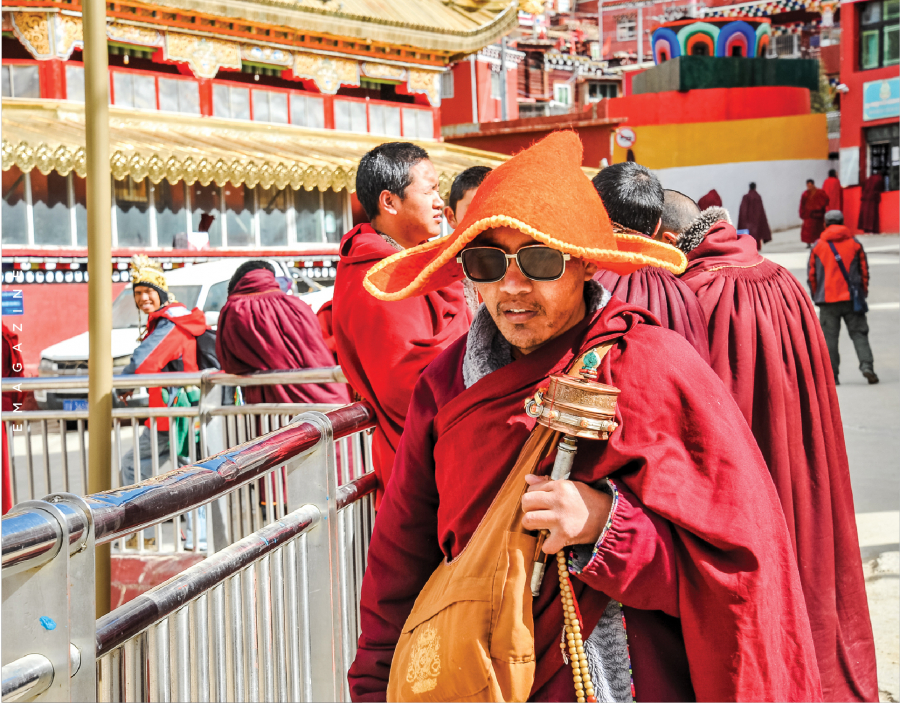
Lying on the car, when I had gone far beyond the checkpoints and remembered the thrill I had just experienced, I kept imagining myself as another disciple of Tang Monk, going through 81 hardships to get the sutras. And my “sutras” were invaluable. That was the moment I opened my eyes and realized I was in a valley filled with red, at 8am, and the sky was still full of stars. How strange! I took a deep, cool breath, the air here had a very distinctive smell - like the smell of an ancient temple, or a tower perched precariously on stone steps. The smell of peace and serenity.

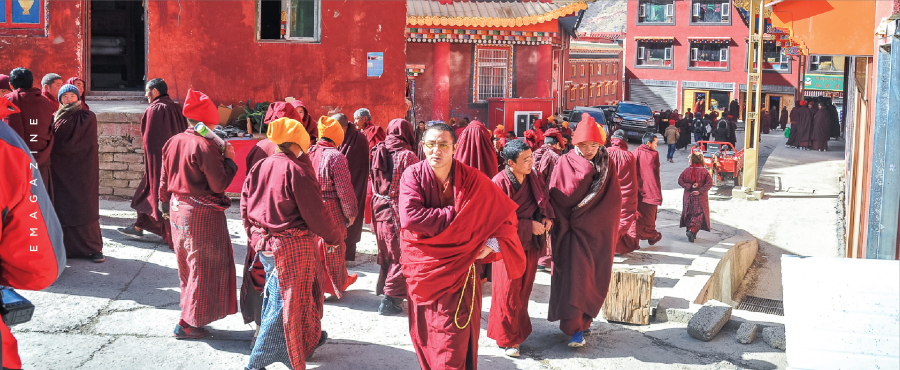
Exactly 40 years ago, in 1980, Jigme Phuntsok - a very influential lama at that time - founded this monastery, with the aim of bringing new vitality to Tibetan Buddhism as well as sending good wishes to the rest of the world. Initially, the residence was just a small earthen wall meditation hermitage for him to practice in seclusion. Over the years, this academy has grown to attract more than 40,000 monks and nuns. Along with that, tens of thousands of red wooden houses were built, creating a red valley among the vast green mountains.
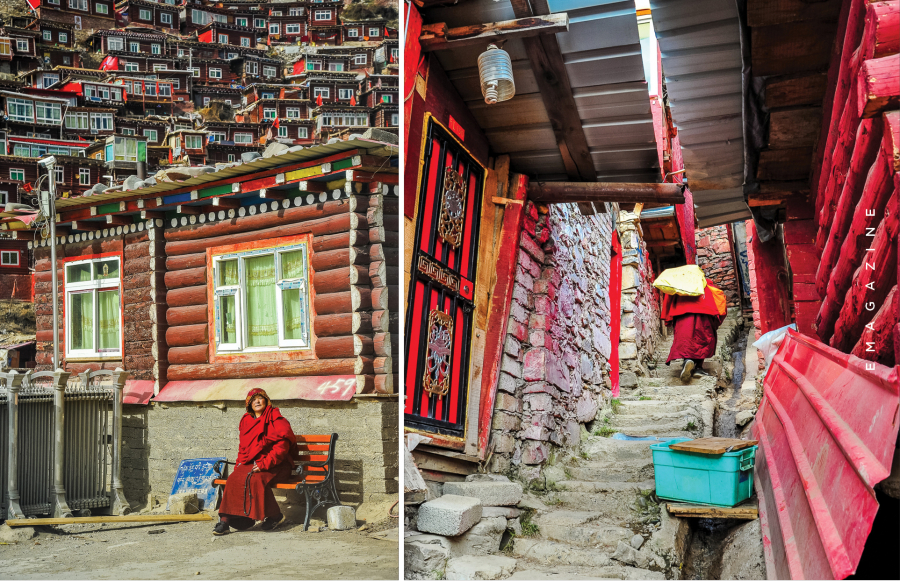
This special landscape is the starting point that attracts tourists to Larung Gar. But it is the mysterious culture here that keeps them here, so that anyone who returns from the “red valley” says: Larung Gar is a place everyone should visit once in their life.
Life and people here are truly special. They live in a constant cycle: In the morning they go to the academy to meditate, read sutras and study Buddhism. They only return home at dusk, bathe and cook dinner. Everyone is a vegetarian. They carry food in small indigo bags, drink soy milk and pick whatever vegetables they can cook on the way home. Here, all the toilets are public. They share bathing, washing clothes and personal hygiene. Tens of thousands of people do not feel uncomfortable with such a "communalized" life, they connect and share completely.
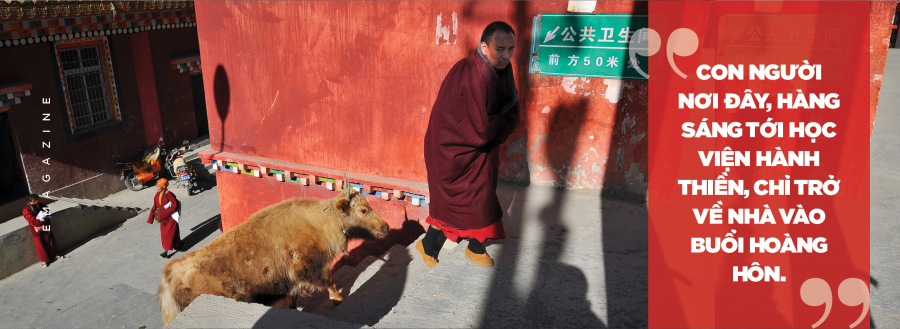

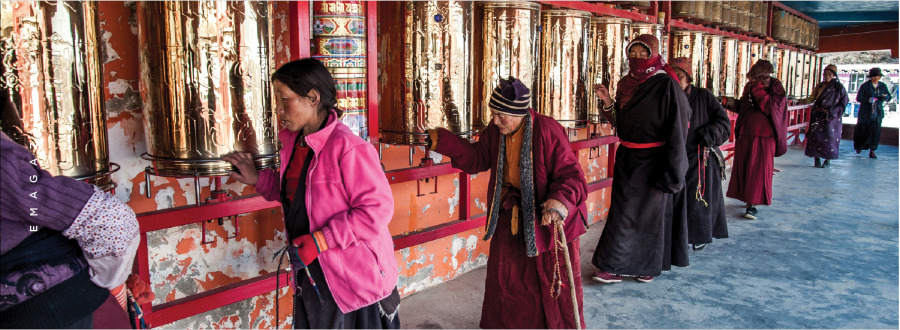
Larung Gar is located at an altitude of nearly 4,000 m above sea level, so the weather here is extremely harsh. The wind blows in gusts and the weather is cold all year round. In addition to wearing thick layers of clothes and building wooden houses to keep warm, Larung Gar residents use Buddhist scriptures to warm their hearts, and for them, that is the most effective way to cope with winter. The day I visited this place, the weather was about -7oC. Everyone was wearing a thick fur coat, holding a rosary in one hand and a prayer wheel in the other, muttering and walking hurriedly in the cold.
The red apple tea here has a very strange taste. After returning to Vietnam, although I tried many places, I have never tasted that feeling again. Perhaps, the difference is not in the taste, but in the moment. I drank the tea while standing in the middle of the valley, secretly observing life in Larung Gar, watching each red dot moving in the cold weather.
Before that, I had heard a lot about the Tibetan Three-Step One-Way ritual. Every three mindful steps, they let their five bodies touch the ground, then bow once. In the cold weather, the thin air, for non-Buddhists like me, walking is already a difficulty, yet they can perform this ritual for a long time, even when no one is watching or when it is windy and rainy. Perhaps, that is the miracle of “belief”.
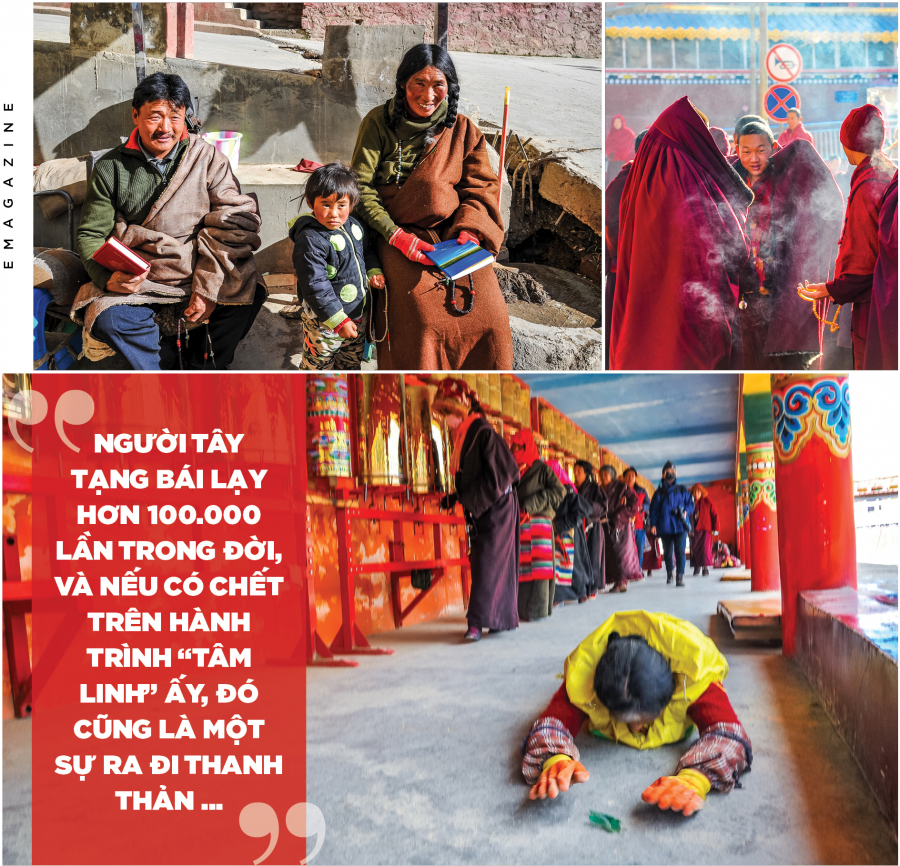
Tibetans prostrate more than 100,000 times in their lifetime. For them, “three steps and one bow” is a spiritual experience, a vow. And if they die on that journey, it is a peaceful and meaningful departure.
In the afternoon, the sky cleared a little. Wandering alone listening to the temple bells, squinting at a man returning with his goat, I kept thinking about the story of a father who sold all his livestock to fulfill his wish to make a pilgrimage of “three steps and one bow” to the holy land of Lhasa. He was exhausted and died on the lonely mountain road. Waiting for his father to return, the son, when he grew up, was determined to fulfill his father’s wish, “three steps and one bow” through many high mountain peaks, through many deep valleys of the majestic Himalayas to reach Jokhang Temple and offer a prayer to the Buddha altar to complete the mission of faith on behalf of his deceased father. Faith is truly a “terrible” thing, and how fortunate are those who still have faith in life and devote themselves to it.

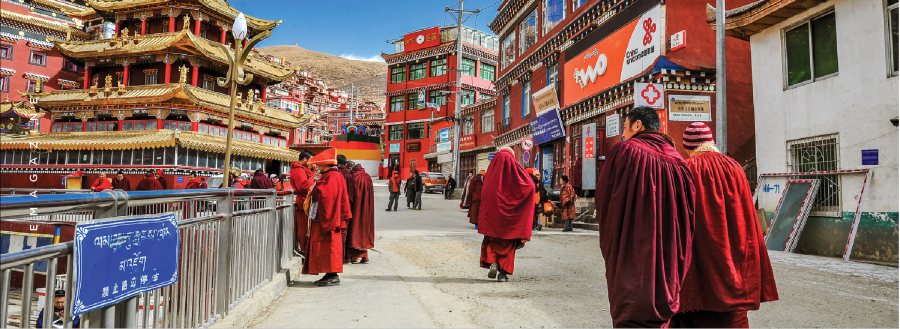
I really love Larung Gar because it is isolated from the outside world. Where people throw away all worries and live with the most primitive things. Where I or thousands of other tourists come and go, it does not change the mystery and spiritual beauty in them. Halfway down the valley, also halfway up time. Where storms and jostling stop after the red color. Where someone comes once and remembers forever for the rest of their life...
And then, when I left this place, and even while I was sitting writing about my journey, I could still hear the chanting and the sound of rosary beads in my ears, the smell of red apple tea still lingering, making my heart peaceful.


















